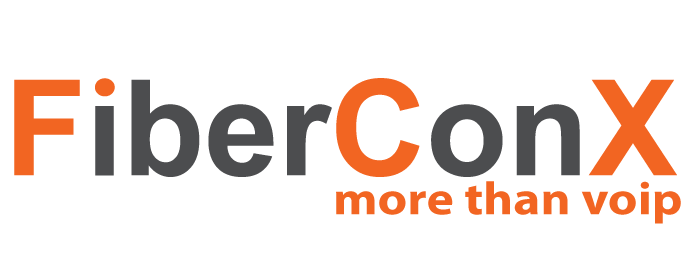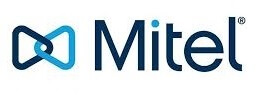
Full-service and AffordableVoIP Phone Service
Business Phone Services*
From $19.95 Per User, Per Monthly
- Local Phone Number Included
- Text, SMS and MMS Messaging Included
- Full Menus Included
- Voicemail & Voicemail to Email Included
- CallerID & Call Waiting Included
- Unlimited Inbound Calling
- 5000 Minutes North America Outbound Calling
- Outbound Overage Calling @ 1.75 cents/minute
- Toll-Free Service Available
- Includes 1 Hour/Month Remote Hands-on
$19.95 per user, per month
This is not an online VoIP Service that YOU have to look after
This is a FULL service Private Hosted PBX
We do ALL the heavy lifting
This includes setting up the PBX, the extensions, voicemail and VoIP phones, everything
As well as your ring groups, conference lines, IVR and main greeting, those too
We manage the updates, security patches, SIP trunks and e911 service, ALL of it
We build it, we monitor it and we support it
The first phone number is included
* Third Party Internet Access is required to use this service
No Busy Signal
Typical phone services are based on copper lines that are only capable of handling a single call. When the first line is in use, the next incoming call will automatically be transferred to the next copper line. That is of course, if one is available. This means extra costs to you, the business owner, or customers calling a competitor.
Busy signals won’t happen with our VoIP based phone services as we do not use copper lines. If you only have one phone number and all extensions are in use, the call is transferred to voicemail. You will of course, receive the usual notices that another call has arrived or you can have it send to your email; or both.
True Realized Savings
Phone services can be costly. Very costly, but it doesn’t have to. We’ve helped many of our customers cut their phone bill in half, or more!
The usual fees associated with telephone services are based on either the number of employees that might actually make phone calls or the number of phone trunks recommended by the provider.
However, a typical small company will only use their phone for a few hours per week.
Why pay large monthly fees based on the number of employees or trunks when you don’t have to?
No Costs Per Feature
We never charge extra fees for any of the standard features with our Basic Phone Service. We even include most premium features with our Business Phone Service package. These are not stripped down, simplified or introductory versions. These are the full features, with all the bells and whistles that our PBX provides. If we have it, you get it. We don’t believe in teasing customers.
No Ties To The Desk
With our VoIP Phone service, you can unplug your phone and take it with you. That’s right. Your laptop can access your email and other business files over the Internet, the same goes for your Phone service. Just plug the phone into your home or cottage network or access the WiFi at the hotel and your calls will come through no matter where you are.
No Spider Web of Wire
With traditional copper based phone services, you need phone wires running from your phone to the wall. If you have multiple employees, that means lots of wires. If your employees have computers, you might have the Ethernet wire also running to the wall. This means more wires that make the working environment unsightly. With VoIP, the same wire that brings the network to your computer also brings your voice service to the phone. With newer phones, you can even use WiFi for your phone service (even when at home, in the office and when traveling).
Connect Offices Together
Gone are the days of having to call outside your phone system to reach staff members at other locations or having to give your private cell number to an irate customer. You could have a few phones at the main office and a few at your second/home office. This allows staff members to call, or transfer calls to remote extensions instead of your private home/cell numbers when you’re working from home or at your second office (if you have one).
Grows As You Grow
As your company grows, so can your phone system. Our phone services are highly scalable, allowing your business to add phone sets as needed without having to schedule an installation appointment. We can configure them, deliver them and make sure your employees know how to use them properly. More than this, we even provide onsite training for your employees at a time convenient for everyone.
Need Conference Calls
Why should you pay for Conference Line Services? Traditional phone lines are not the best at making conference calls with more than three participants (Three-Way Calling). Our Business Phone Services include built-in functionality that allow for users to make large conference calls, at no extra cost.
Reduce Deployment Costs
With traditional phone services, based on copper wires, dedicated CAT3 phone wire needs to be run for all your phones. This gets very costly if you have lots of phones. With VoIP phones, you simply plug them into the existing CAT5/6 Ethernet cables. Even more economical are the WiFi capable VoIP phones that only need a power supply and access to the WiFi network.
Remote Phone Numbers
Typically, businesses will have a Local and a Toll Free number, possibly one of each for faxes as well. With our Business Phone Services, even with our Basic Phone Services, you can also have remote phone numbers that are local phone numbers in most North American cities and even some International cities. This reduces the Toll Free charges and gives your business a virtual presence in other cities where your customers may be located.
PBX Features Included
Auto-Attendant/IVR
Busy Lamp Field (BLF)
Examples of BLF which can indicate status are:
Whether an extension is in use (whether a user is on the phone or not)
Speed-dial when key is pressed
Whether or not there is a call parked (awaiting retrieval by someone)
Whether Call Flow Control has been enabled/disabled (useful for turning on/off open/closed IVR – with a simple button press)
A good example of the ‘extension in use’ BLF would be if someone calls in and wishes to reach Jim at extension 220. The receptionist would take a look at the BLF panel on their phone and see that Jim is on his phone (the light next to Jim’s name is RED), the receptionist can then ask the caller whether or not they would like to leave a message, or try back later. If the caller wants to leave a message, the receptionist simply transfers the call directly to Jim’s voicemail (*220).
Call Forwarding
An example of this feature would be if a particular user had to leave the office for a given amount of time and wanted to receive their phone calls at another location.
Call Parking
This system is extremely useful when there are phones located where there may be more than 1 user (e.g. factory floor, newsroom, meeting room, etc…). Calls can be placed in a parking lot, and the receptionist can simply contact who the intended recipient is and tell them the code to access the call (e.g. “Jill your husband is on line 76” – Jill simply dials 76 on any phone and is connected to her husband).
Call Queues
Queued calls have numerous options and configurations associated with them. A few of them as follows:
Call recording
Agent ring options
Ring all agents
Ring available agents only
Ring certain agents only
Alert agent how long a caller has been holding prior to answering call
Call queue ‘weight’ to apply priority to calls from different queues which would be answered by one group of agents (i.e. support calls are higher priority than sales)
Fully customizable timing and messaging options (how long a caller waits on hold, how often to play a message, automated message which estimates on-hold time, and more…)
Call Recording
Call recording can be useful for training and/or quality assurance. Some jurisdictions/countries do not allow a call to be recorded without prior consent, please check your local laws before recording a phone call.
Call Reporting
Call Screening
Call Transfer
Call transfers can be done in two distinct ways. The first method is called a Blind Transfer and it will connect two calls immediately. The second is called an Attended Transfer, and this method connects the person making the transfer with the intended recipient first. This gives the transferring user a chance to inform the recipient who is on the line before the actual transfer is made.
Caller ID
Similarly, all Hosted PBX extensions can be set to display a certain Caller ID when making outgoing calls. This is useful if a particular phone belongs to a particular department or if an individual wishes to display his/her direct number when placing outgoing calls.
Conference Rooms
For example, your conference room can be linked to your IVR message without anyone ever knowing. A caller would dial your regular business number, and once they reached the IVR message, they would enter the access code (#XXX) followed by the password, and they would be connected to the conference room.
Conference’s can easily be setup by contacting one or more parties via extension dialing. This conference, however, has restricted functionality, and may not work with outside parties.
Do Not Disturb
Find Me/Follow Me
When enabled, the Find Me/Follow Me feature will direct calls to alternate extensions/external destinations (such as mobile or landline) should a call persist (ring) longer than the defined number of seconds. At first, the system will ring the initial extension for the defined number of seconds (we recommend at least 10 seconds). Once the period expires, the system directs the call to ring the extension(s) and/or external destinations listed as Find Me/Follow Me numbers. The call can be accepted or rejected by an external device (such as a mobile phone) without the caller having knowledge of this. A rejection will ultimately send the call to the first (original) extension’s busy voicemail.
This feature ensures that a caller will never reach an external device’s voicemail system. This is extremely beneficial because this ensures that follow me destination voicemails (such as a mobile user’s personal voicemail) is never reached. Keep in mind that once a call is answered on an external device, it cannot be transferred back into the system (e.g. to an extension, ring group, call queue, etc…).
Intercom & Paging
Intercom allows one user to contact another user (or users in a ring group) instantly. All parties are able to speak and listen to each other.
Paging allows one user to contact a group of users simultaneously. This differs from the intercom feature due to the fact that it is a one-way audio signal, meaning that those being paged cannot speak back to the pager.
These two features have many advantageous uses. One such use would be efficient in a large work environment such as a warehouse or large office. If a user had an important message to relay to the entire office, they would simply dial the page code which contacted all departments/offices, and speak the message. Everyone (save for those on the phone) would instantly be notified.
Note: Intercom and paging may not work on certain phones.
Multiple Offices
The beauty of multiple Hosted PBX’s, is that they can be configured to work together flawlessly. Almost every Hosted PBX feature can work between offices (e.g. conferences can be held between offices, calls can be transferred from one office to another, employees can call each other free of charge, and more).
Music On Hold
An example of this would be to record a message which can then play every X seconds indicating that the call is “important to us and will be answered in priority sequence”.
Another option is to record a message which can be played to callers to inform them of a potential issue which has been made aware (e.g. “we are currently aware of the escaped monkeys and are working to apprehend them. If this call is not concerning the ravenous monkeys, then please continue holding”).
Office Hours
Phone Directory
Remote Users
Remote Users allow an individual to work from anywhere in the world, and calls can be placed and received just as if they were sitting at a desk in the office. This is an extremely useful feature which can be taken advantage of in a multitude of situations and scenarios (e.g. employees working from home, employees who are often traveling, employees in another city, country, and more).
Ring Groups
Additional options can be configured such as: the ring strategy (ring all, ring sequentially, ring first available, and more), max ring time, announcement (to be played to the caller prior to dialling the group), whether to ring or play music, and more.
This feature is useful for IVR’s and call queues as incoming calls can be directed to an entire department with ease. This can also be useful if you wish to contact a group of phones internally (technical support agents). It is as simple as assigning those phones to a ring group (such as 601), and dialing it from any system phone.
Voicemail
‘unavailable greeting’ – played when calls are not answered
‘busy greeting’ – played when a extension called is in use
‘temporary greeting’ – when set, always played for all calls
When a call reaches a users voicemail, the caller is prompted to leave a message after a pre-recorded message.
Hosted PBX’s are capable of supporting hundreds of separate voicemail boxes. Hosted PBX’s also have voicemail to email functionality, which allows voicemail messages to be delivered directly to a users email address where they can be listened to without the use of their desk phone.
Voicemail to Email
This feature has many inherent advantages, however due to requirements which necessitate the use of an external email server, subscription to our voicemail to email service may be mandatory in order for this feature to function.
FiberConX is proud to offer solutions from our technology partners






